 W
WSpace colonization is a political concept of space advocacy for permanent human habitation and exploitation of natural resources off the planet Earth.
 W
WEuropa, the fourth-largest moon of Jupiter, is a subject in both science fiction and scientific speculation for future human colonization. Europa's geophysical features, including a possible subglacial water ocean, make it a possibility that human life could be sustained on or beneath the surface.
 W
WThe hypothetical colonization of Mars has received interest from public space agencies and private corporations, and has received extensive treatment in science fiction writing, film, and art.
 W
WColonization of the Moon is a concept employed by some proposals of establishing permanent human settlement or robotic presence on the Moon, the closest astronomical body to Earth.
 W
WSaturn’s largest moon Titan is one of several candidates for possible future colonization of the outer Solar System.
 W
WThe colonization of Venus has been a subject of many works of science fiction since before the dawn of spaceflight, and is still discussed from both a fictional and a scientific standpoint. However, with the discovery of Venus's extremely hostile surface environment, attention has largely shifted towards the colonization of the Moon and Mars instead, with proposals for Venus focused on colonies floating in the upper-middle atmosphere and on terraforming.
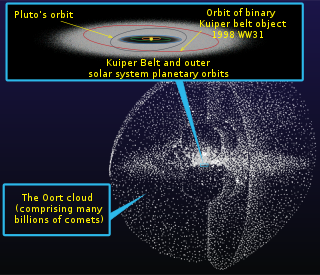 W
WFreeman Dyson has proposed that trans-Neptunian objects, rather than planets, are the major potential habitat of life in space. Several hundred billion to trillion comet-like ice-rich bodies exist outside the orbit of Neptune, in the Kuiper belt and Inner and Outer Oort cloud. These may contain all the ingredients for life, including significant amounts of deuterium and helium-3. Since Dyson's proposal, the number of trans-Neptunian objects known has increased greatly.
 W
WThe 2suit is a garment designed to facilitate sex in weightless environments. It has been tested in microgravity during a parabolic flight.
 W
WArtificial gravity is the creation of an inertial force that mimics the effects of a gravitational force, usually by rotation. Artificial gravity, or rotational gravity, is thus the appearance of a centrifugal force in a rotating frame of reference, as opposed to the force experienced in linear acceleration, which by the equivalence principle is indistinguishable from gravity. In a more general sense, "artificial gravity" may also refer to the effect of linear acceleration, e.g. by means of a rocket engine.
 W
WAsgardia, also known as the Space Kingdom of Asgardia and "Asgardia the Space Nation", is a micronation formed by a group of people who have launched a satellite into Earth orbit. They refer to themselves as "Asgardians" and they have given their satellite the name "Asgardia-1". They have declared sovereignty over the space occupied by and contained within Asgardia -1. The Asgardians have adopted a constitution and they intend to access outer space free of the control of existing nations and establish a permanent settlement on the Moon by 2043.
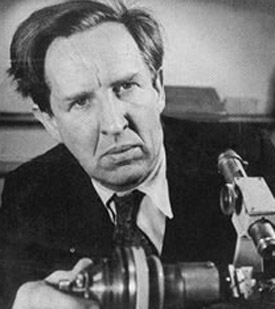 W
WJohn Desmond Bernal was an Irish scientist who pioneered the use of X-ray crystallography in molecular biology. He published extensively on the history of science. In addition, Bernal wrote popular books on science and society, and he was also a communist activist.
 W
WThe Coalition for Deep Space Exploration is a United States space advocacy organization for space industry businesses and non-profit groups supporting continued government investment in space exploration.
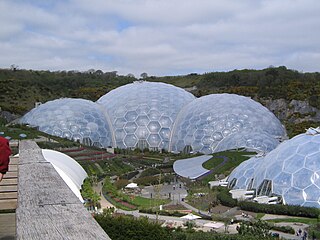 W
WA domed city is a hypothetical structure that encloses a large urban area under a single roof. In most descriptions, the dome is airtight and pressurized, creating a habitat that can be controlled for air temperature, composition and quality, typically due to an external atmosphere that is inimical to habitation for one or more reasons. Domed cities have been a fixture of science fiction and futurology since the early 20th century, and may be situated on Earth, a moon or other planet.
 W
WA Dyson sphere is a hypothetical megastructure that completely encompasses a star and captures a large percentage of its power output. The concept is a thought experiment that attempts to explain how a spacefaring civilization would meet its energy requirements once those requirements exceed what can be generated from the home planet's resources alone. Only a tiny fraction of a star's energy emissions reach the surface of any orbiting planet. Building structures encircling a star would enable a civilization to harvest far more energy.
 W
WA Dyson tree is a hypothetical genetically engineered plant capable of growing inside a comet, suggested by the physicist Freeman Dyson. Plants could produce a breathable atmosphere within hollow spaces in the comet, utilising solar energy for photosynthesis and cometary materials for nutrients, thus providing self-sustaining habitats for humanity in the outer solar system analogous to a greenhouse in space or a shell grown by a mollusc.
 W
WEmbryo space colonization is a theoretical interstellar space colonization concept that involves sending a robotic mission to a habitable terrestrial planet, dwarf planet, minor planet or natural satellite transporting frozen early-stage human embryos or the technological or biological means to create human embryos. The proposal circumvents the most severe technological problems of other mainstream interstellar colonization concepts. In contrast to the sleeper ship proposal, it does not require the more technically challenging 'freezing' of fully developed humans.
 W
WThe Exploration Systems Architecture Study (ESAS) is the official title of a large-scale, system level study released by the National Aeronautics and Space Administration (NASA) in November 2005 in response to American president George W. Bush's announcement on January 14, 2004 of his goal of returning astronauts to the Moon and eventually Mars — known as the Vision for Space Exploration. The Constellation Program was cancelled in 2010 by the Obama Administration and replaced with the Artemis Program in 2017 under the Trump Administration.
 W
WIn speculative fiction, floating cities and islands are a common trope, which range from cities and islands that float on water to ones that float in the atmosphere of a planet by purported scientific technologies or by magical means. While very large floating structures have been constructed or proposed in real life, aerial cities and islands remain in the realm of fiction.
 W
WGlobus Cassus is an art project and book by Swiss architect and artist Christian Waldvogel presenting a conceptual transformation of Planet Earth into a much bigger, hollow, artificial world with an ecosphere on its inner surface. It was the Swiss contribution to the 2004 Venice Architecture Biennale and was awarded the Gold Medal in the category "Most beautiful books of the World" at the Leipzig Book Fair in 2005. It consists of a meticulous description of the transformation process, a narrative of its construction, and suggestions on the organizational workings on Globus Cassus.
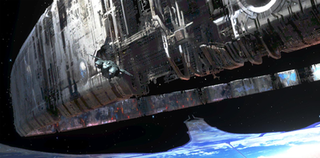 W
WThe Halo Array is a group of fictional megastructures and superweapons in the Halo science fiction franchise, consisting of ringworlds known as Halos built by structures known as the Ark. They are referred to as "Installations" by their artificial intelligence caretakers, and were created by an ancient race known as the Forerunners. The series' alien antagonists, the Covenant, refer to the Halos as the "Sacred Rings", believing them to form part of a greater religious prophecy known as "The Great Journey". In the games' stories, the Forerunners built the Halo Array to contain and study the Flood, an infectious alien parasite. The rings act together as a weapon of last resort; when fired, they kill all sentient life in the galaxy capable of falling prey to the Flood, thereby starving the parasite of its food. The battle to prevent their activation forms the crux of the plot progression for the first Halo trilogy of games.
 W
WCharles H. Holbrow is an American physicist.
 W
WIn space exploration, in situ resource utilization (ISRU) is the practice of collection, processing, storing and use of materials found or manufactured on other astronomical objects that replace materials that would otherwise be brought from Earth.
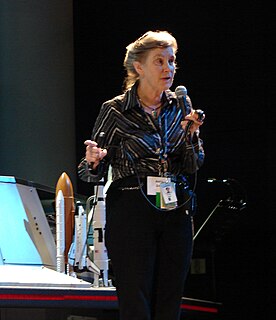 W
WThe International Space Settlement Design Competition, more commonly known as "SpaceSet" or "ISSDC", is an annual competition founded by Anita Gale and Dick Edwards, and is supported by NASA. The competition is for high school students and attempts to recreate the experience of working in an aerospace company's proposal team. The teams, known as 'companies', are asked to design a space colony to fulfill a Request for Proposal (RFP).
 W
WThe interplanetary Internet is a conceived computer network in space, consisting of a set of network nodes that can communicate with each other. These nodes are the planet's orbiters (satellites) and landers, and the earth ground stations. For example, the orbiters collect the scientific data from the Curiosity rover on Mars through near-Mars communication links, transmit the data to Earth though direct links from the Mars orbiters to the Earth ground stations, and finally the data can be routed through Earth's internal internet.
 W
WThe L5 Society was founded in 1975 by Carolyn Meinel and Keith Henson to promote the space colony ideas of Gerard K. O'Neill.
 W
WSpace law is the body of law governing space-related activities, encompassing both international and domestic agreements, rules, and principles. Parameters of space law include space exploration, liability for damage, weapons use, rescue efforts, environmental preservation, information sharing, new technologies, and ethics. Other fields of law, such as administrative law, intellectual property law, arms control law, insurance law, environmental law, criminal law, and commercial law, are also integrated within space law.
 W
WLightspeed is a video game developed and released by MicroProse in 1990. It features a space flight simulator game and action game elements with an emphasis on strategy and exploration. The box describes the title as an "Interstellar Action and Adventure" game. The game features space exploration, trade, combat and diplomacy in the same vein as 4X s such as Master of Orion. Lightspeed, unlike the popular series of turn-based strategy games, plays out in real-time.
 W
WA lunar regolith simulant is a terrestrial material synthesized in order to approximate the chemical, mechanical, or engineering properties of, and the mineralogy and particle size distributions of, lunar regolith. Lunar regolith simulants are used by researchers who wish to research the materials handling, excavation, transportation, and uses of lunar regolith. Samples of actual lunar regolith are too scarce, and too small, for such research, and in any case have been contaminated by exposure to Earth's atmosphere.
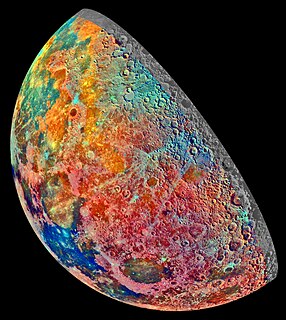 W
WThe Moon bears substantial natural resources which could be exploited in the future. Potential lunar resources may encompass processable materials such as volatiles and minerals, along with geologic structures such as lava tubes that together, might enable lunar habitation. The use of resources on the Moon may provide a means of reducing the cost and risk of lunar exploration and beyond.
 W
WA mass driver or electromagnetic catapult is a proposed method of non-rocket spacelaunch which would use a linear motor to accelerate and catapult payloads up to high speeds. All existing and contemplated mass drivers use coils of wire energized by electricity to make electromagnets. Sequential firing of a row of electromagnets accelerates the payload along a path. After leaving the path, the payload continues to move due to momentum.
 W
WThe Millennial Project: Colonizing the Galaxy in Eight Easy Steps by Marshall T. Savage is a book in the field of exploratory engineering that gives a series of concrete stages the author believes will lead to interstellar colonization. Many specific scientific and engineering details are presented, as are numerous issues involved in space colonization.
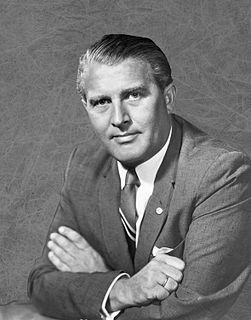 W
WThe National Space Institute was a space advocacy group, the first of its kind, established by Dr. Wernher von Braun to help maintain the public's support for the United States space program. It has since merged, in 1987, with the L5 Society founded by fans of the Space Colonization and Industrialization work of Dr. Gerard K. O'Neill, to become the present-day National Space Society.
 W
WAn orbital ring is a concept of an enormous artificial ring placed around the Earth that rotates at an angular rate that is faster than the rotation of the Earth.
 W
WPlanetary habitability is the measure of a planet's or a natural satellite's potential to develop and maintain environments hospitable to life. Life may be generated directly on a planet or satellite endogenously or be transferred to it from another body, through a hypothetical process known as panspermia. Environments do not need to contain life to be considered habitable nor are accepted habitable zones the only areas in which life might arise.
 W
WPlanetary protection is a guiding principle in the design of an interplanetary mission, aiming to prevent biological contamination of both the target celestial body and the Earth in the case of sample-return missions. Planetary protection reflects both the unknown nature of the space environment and the desire of the scientific community to preserve the pristine nature of celestial bodies until they can be studied in detail.
 W
WRingworld is a 1970 science fiction novel by Larry Niven, set in his Known Space universe and considered a classic of science fiction literature. Ringworld tells the story of Louis Wu and his companions on a mission to the Ringworld, a rotating wheel space station, an alien construct in space 186 million miles in diameter. Niven later added three sequel novels and then cowrote, with Edward M. Lerner, four prequels and a final sequel; the five latter novels constitute the Fleet of Worlds series. All the Ringworld novels tie into numerous other books set in Known Space. Ringworld won the Nebula Award in 1970, as well as both the Hugo Award and Locus Award in 1971.
 W
WA space elevator is a proposed type of planet-to-space transportation system. The main component would be a cable anchored to the surface and extending into space. The design would permit vehicles to travel along the cable from a planetary surface, such as the Earth's, directly into space or orbit, without the use of large rockets. An Earth-based space elevator would consist of a cable with one end attached to the surface near the equator and the other end in space beyond geostationary orbit. The competing forces of gravity, which is stronger at the lower end, and the outward/upward centrifugal force, which is stronger at the upper end, would result in the cable being held up, under tension, and stationary over a single position on Earth. With the tether deployed, climbers could repeatedly climb the tether to space by mechanical means, releasing their cargo to orbit. Climbers could also descend the tether to return cargo to the surface from orbit.
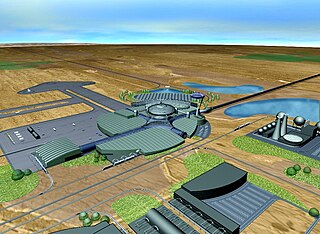 W
WStarTram is a proposed space launch system propelled by maglev. The initial Generation 1 facility would launch cargo only, launching from a mountain peak at an altitude of 3 to 7 kilometres with an evacuated tube staying at local surface level; it has been claimed that about 150,000 tons could be lifted to orbit annually. More advanced technology would be required for the Generation 2 system for passengers, with a longer track instead gradually curving up at its end to the thinner air at 22 kilometres (14 mi) altitude, supported by magnetic levitation, reducing g-forces when each capsule transitions from the vacuum tube to the atmosphere. A SPESIF 2010 presentation stated that Generation 1 could be completed by the year 2020 or later if funding began in 2010, and Generation 2 by 2030 or later.
 W
WStudents for the Exploration and Development of Space (SEDS) is an international student organization whose purpose is to promote space exploration and development through educational and engineering projects.
 W
WTerraforming or terraformation is the hypothetical process of deliberately modifying the atmosphere, temperature, surface topography or ecology of a planet, moon, or other body to be similar to the environment of Earth to make it habitable by Earth-like life.
 W
WThe terraforming of Venus is the hypothetical process of engineering the global environment of the planet Venus in such a way as to make it suitable for human habitation. Terraforming Venus was first proposed in a scholarly context by the astronomer Carl Sagan in 1961, although fictional treatments, such as The Big Rain of The Psychotechnic League by novelist Poul Anderson, preceded it. Adjustments to the existing environment of Venus to support human life would require at least three major changes to the planet's atmosphere:Reducing Venus' surface temperature of 737 K Eliminating most of the planet's dense 9.2 MPa (91 atm) carbon dioxide and sulfur dioxide atmosphere via removal or conversion to some other form The addition of breathable oxygen to the atmosphere.